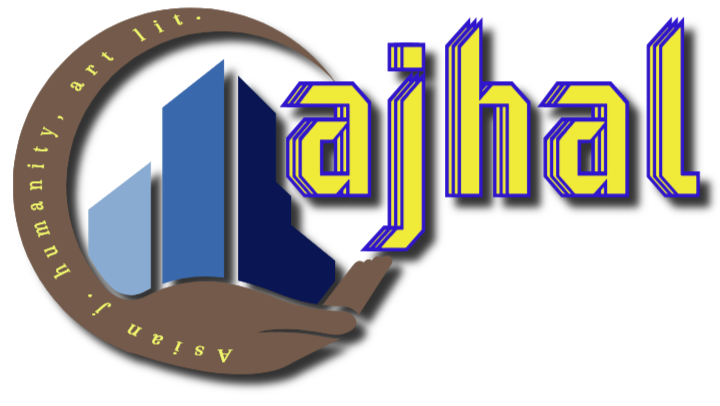Roles And Challenges of Secondary School Instructional Leadership for the Achievement of Student Learning: The Case of South Gondar Administrative Zone, Amhara Region, Ethiopia
DOI:
https://doi.org/10.18034/ajhal.v1i1.282Keywords:
Challenge, Distributed Leadership, Instructional LeadershipAbstract
This study examined the roles and challenges of secondary school instructional leadership for the achievement of student learning in some selected schools in the South Gondar, Ethiopia. The researchers used a descriptive research design of survey type and gathered data through questionnaire and interview. The sample of this study comprises; principals, unit leaders, teachers and students in eight secondary schools in the South Gondar Zone. Thus, one hundred seventy five (175) teachers, seventy five (75) instructional leaders (20 principals, 11 unit leaders & 44 department heads), two hundred eighty five (285) students and eleven (11) officials at regional and district level were selected. Five research questions guided the study. The data collected were analyzed through the computation of percentages. Findings indicated significant relationships between distributed leadership and school goal achievement; teachers’ professional development; instructional programme management; effective teaching and learning; and promotion of school climate which include facilitating and understanding of the lesson, create an interesting environment with high class participation. Based on this finding, school heads/authorities should make it mandatory that distributed leadership should be adopted in such a way that everyone in schools is empowered to make his or her job more efficient, meaningful, and effective.
Downloads
References
Campbell, R. (1987). A history of thoughts and practical educational administration. New York: Teachers College Press.
Catano, N., & Stronge, J. H. (2007). “What do we expect of school principals? Congruence between principal evaluation and performance standards”. International Journal of Leadership in Education, 10, 379–399.
Cuban, L. (1984). Transforming the frog into a prince: Effective schools research, policy, and practice at the district level. Harvard Educational Review, 54, 129–152.
Cunningham, W., G. and Paula A. C.(2009). Educational leadership: A bridge to improved practice (4th ed.). Boston: Pearson education, Inc.
Damtew, T. (2007). Building research capacity in Ethiopian universities: The realities andthe challenges. Speech on United Nations Economic Commission for Africa (UNECA). Retrieved from: http://www2.bc.edu/%7Eteferra/Building_Research_Capacity_in_Ethiopia.html
Darling-Hammond, L. (2005). Developing professional development schools: Early lessons, challenge, and promise. In L. Darling-Hammond (Ed.), Professional development schools Schools for developing a profession (pp. 1-27). New York: Teachers College Press.
Endawke, et. al. (2009). Quality of Higher Education in Ethiopian Public Institutions. Forum for Social Studies. Addis Abeba University Press.
Fullan, M. (2006). Leading professional learning. The School Administrator, 63(10), 10-15.
Goodwin, R. H., Cunningham, M. L., & Childress, R. (2003). The changing role of the secondary principal. NASSP Bulletin, 87(634), 26.
Hallinger, P. (2003). “Leading educational change: Reflections on the practice of instructional and transformational leadership”. Cambridge Journal of Education, 33(3), 329–351.
Hallinger, P. (2008, March). “Methodologies for studying school leadership: A review of 25 years of research using the principal instructional management rating scale”. Paper presented at the annual meeting of the American Educational Research Association, New York.
Halverson, R. (2005). Education Leadership and Policy Analysis.Washington, D.C. : University of Wisconsin-Madison.
Hammersley, M. (2012). Methodological Paradigms in Educational Research, British Educational Research Association on-line resource.
Kiumi, J., Bosire, J. and Sang, A. (2009). “Relationship between principals’ management approaches and student discipline in public secondary schools in Nyandarua and laikipia Districts, Kenya”. Global Journal of Educational Research Vol. 8(1&2) 2009, p.29- 38.
Leithwood, K. (2012). “School leadership, evidence-based decision making, and large-scale student assessment”. Studies in Educational Leadership, 15, 17–39.
Leithwood, K., Patten, S., & Jantzi, D. (2010). “Testing a conception of how school leadership influences student learning”. Educational Administration Quarterly, 46, 671.
Leithwood, K., Seashore Louis, K., Anderson, S., and Wahlstrom, K. (2004). How leadership influences student learning. Bloomington: Center for Applied Research and Educational Improvement. University of Minnesota.
Lemlem, T. (2010). “Review of some recent literature: Identifying Factors that Affect Ethiopia’s Education Crisis”, Ee-JRIF Vol 2, No 2 2010 - Education Issue: pp. 56-68.
Levine, A. (2005). Educating school leaders. New York: The Education School Project.
Lyne de Ver, H. (2009). “Leadership, Politics and Development: A Literature Survey”, LECRP Background Paper, http://www.dlprog.org
MOE. (2010) Education Sector Development program: Action plan, Addis Ababa: printing press.
MOE. (2012) National Standard for School Principals (First edition MoE: Ethiopia) Page 3
Northouse, P. G. (2007). Leadership: Theory and practice (4th ed.). Thousand Oaks, CA: Sage.
Onderi, H. and Andrew, M. (2013). “Secondary School Principals in Nyamira County in Kenya: Issues And Challenges, Bondo University College: KENYA”, Reading Gap International CIC, UK. Vol. 1 No. 1,
Pankhurst, R. (1999). “Italian Fascist War Crimes in Ethiopia: A History of Their Discussion, from the League of Nations to the United Nations” (1936–1949) Northeast African Studies Vol. 6, No. 1-2 (New Series), pp. 83-140.
Stronge, J. H. (1993). “Defining the principalship: Instructional leader or middle manager”. NASSP Bulletin, 77(553), 1–7.
Tekeste N. (2006). Education in Ethiopia: From crisis to the brink of collapse. Nordiska Afrikainstitutet - 33. Uppsala, Sweden: Nordiska Afrikainstitute.
Tyack, D. B., & Hansot, E. (1982). Managers of virtue: Public school leadership in America, 1820–1980. New York: Basic Books.
World Bank. (2005) Education in Ethiopia: Strengthening the foundation for sustainable progress. Washington, DC: The World Bank.
Yukl (2002). Leadership in organizations. (5th ed.). Upper Saddle River, New Jersey: Prentice Hall.
--0--















